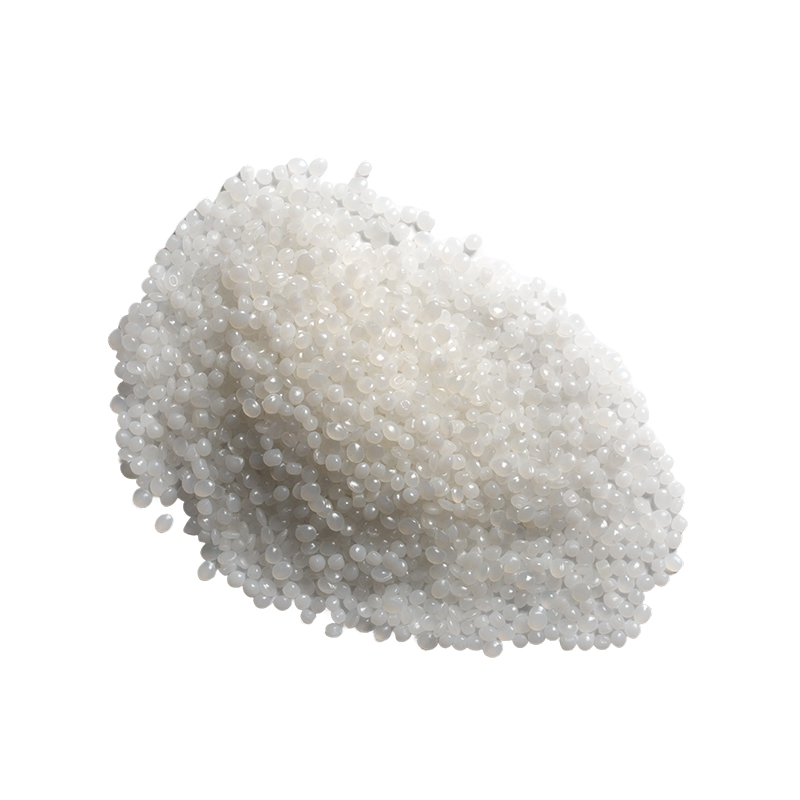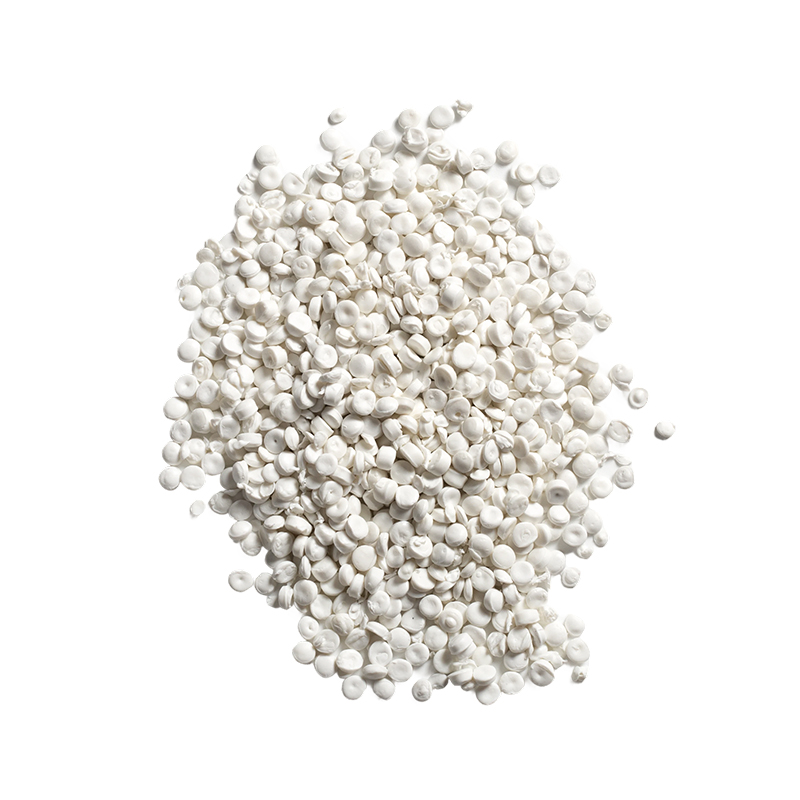Will the uncontrolled temperature and humidity during storage of cling film recycled pellets accelerate the degradation of their anti-aging properties?
Release Time : 2025-09-08
Uncontrolled temperature and humidity during storage of recycled cling film pellets can significantly accelerate the degradation of their anti-aging properties. The core of this issue lies in the direct impact of temperature and humidity fluctuations on the pellets' material structure, internal additives, and surface conditions, disrupting their inherent stability and, consequently, weakening their anti-aging capabilities. As recycled plastic pellets, cling film pellets may already have experienced some wear and tear in their material structure and additive system during the initial recycling, crushing, and melting processes. Abnormal temperature and humidity in the storage environment can further amplify these flaws, creating a potential for degradation of their anti-aging properties.
Regarding the impact of uncontrolled temperature, recycled cling film pellets are primarily composed of polyethylene (PE) or polyvinyl chloride (PVC), polymers that are highly sensitive to temperature fluctuations. When the storage temperature is excessively high, the polymer chains within the pellets become more active due to increased thermal motion, potentially loosening the stable molecular structure originally formed through processing. For example, the crystalline regions of PE pellets may undergo localized melting, disrupting the regularity of the crystal arrangement. PVC pellets, on the other hand, are more susceptible to dehydrochlorination reactions at high temperatures, forming unstable conjugated double bonds. Furthermore, residual antioxidants, light stabilizers, and other anti-aging agents in recycled pellets will volatilize or decompose more rapidly in high temperatures, losing their protective properties for the polymer chains. Without these protective agents, pellets' resistance to aging is significantly reduced when exposed to oxidation, sunlight, and other factors during subsequent processing or use, making them more susceptible to aging phenomena such as embrittlement and cracking. While low temperatures won't directly cause the additives to decompose, they will harden the pellet material and reduce its toughness. Even minor impacts or compression during storage can cause microcracks on the surface. These cracks can become a barrier to subsequent aging, accelerating the decline in anti-aging properties.
The impact of uncontrolled humidity on the anti-aging properties of cling film recycled pellets is primarily due to moisture penetration and erosion. When the storage environment is exposed to high humidity, moisture from the air gradually penetrates the interior of the recycled pellets. This moisture reacts with trace impurities remaining in the pellets (such as oil and detergent residue from the recycling process), forming corrosive substances that slowly destroy the polymer chain structure, leading to a simultaneous decline in the pellets' mechanical properties and anti-aging performance. Furthermore, for recycled PVC plastic wrap pellets, moisture can also promote hydrolysis and accelerate the dehydrochlorination process, further exacerbating material aging. Furthermore, in high humidity environments, water droplets easily condense on the pellet surfaces, causing adhesion between pellets. This not only affects fluidity during subsequent processing but also causes localized aging and deterioration in the adhered pellets due to prolonged exposure to moisture, further compromising their overall anti-aging performance. Even for highly water-resistant pellets like PE, prolonged exposure to high humidity can lead to microbial growth on their surfaces. These microbial metabolites can corrode the pellet surfaces, destroying the protective coating of the additives, and indirectly accelerating the degradation of anti-aging properties.
More notably, uncontrolled temperature and humidity often create a synergistic effect, further amplifying the damage to the anti-aging properties of cling film recycled pellets. For example, high temperatures accelerate the penetration of moisture into the pellets, and the presence of moisture promotes oxidation reactions and additive decomposition at high temperatures. The synergistic effects of temperature and humidity significantly shorten the time it takes for anti-aging properties to degrade under high temperature or high humidity alone. For example, in a warehouse exposed to high temperatures and high humidity in the summer, cling film recycled pellets may develop a yellowing surface and become brittle in just a few weeks. This is the result of the combined effects of temperature and humidity, which lead to rapid loss of additives and accelerated aging of the polymer chains. Conversely, if the humidity in the warehouse is too high and the temperature fluctuates frequently (such as high temperatures during the day and low temperatures at night), the pellets will repeatedly undergo a cycle of "moisture absorption and drying." This repeated environmental fluctuation creates internal stress within the pellets, which can lead to micro-breaks in the polymer chains, creating more aging sites and a consequent decline in anti-aging properties.
In actual storage scenarios, prolonged exposure to uncontrolled temperature and humidity will not only degrade cling film recycled pellets' anti-aging properties, but will also affect subsequent processing quality and the performance of the finished product. For example, if cling film is made from pellets with degraded anti-aging properties, the finished product will more quickly experience problems such as decreased light transmittance, reduced tensile strength, and brittleness during use, failing to meet normal usage requirements. Degradation may even produce harmful substances, posing a safety hazard if used for food packaging. Even for non-food contact applications (such as agricultural mulch), insufficient anti-aging properties can significantly shorten the product's lifespan, increasing operating costs and environmental impact.
Therefore, to prevent uncontrolled temperature and humidity from accelerating the degradation of cling film recycled pellets' anti-aging properties, targeted protective measures should be implemented during storage. These include selecting a cool, dry, well-ventilated warehouse equipped with temperature and humidity control equipment to maintain the temperature and humidity within an appropriate range; sealing the pellets to minimize direct contact with air and moisture; and regularly checking the warehouse's temperature and humidity, as well as the pellets' condition, to promptly adjust storage conditions if any abnormalities are detected. These measures can effectively mitigate the deterioration of the anti-aging properties of recycled pellets caused by temperature and humidity, ensuring their subsequent processing and use.
Uncontrolled temperature and humidity during storage of cling film recycled pellets can significantly accelerate the degradation of their anti-aging properties through various pathways, including damage to the material structure, accelerated loss of additives, and the promotion of chemical reactions. The synergistic effects of temperature and humidity can further amplify these detrimental effects. Paying attention to the storage environment and maintaining temperature and humidity management is crucial for ensuring the stable performance of cling film recycled pellets and extending their lifespan.







